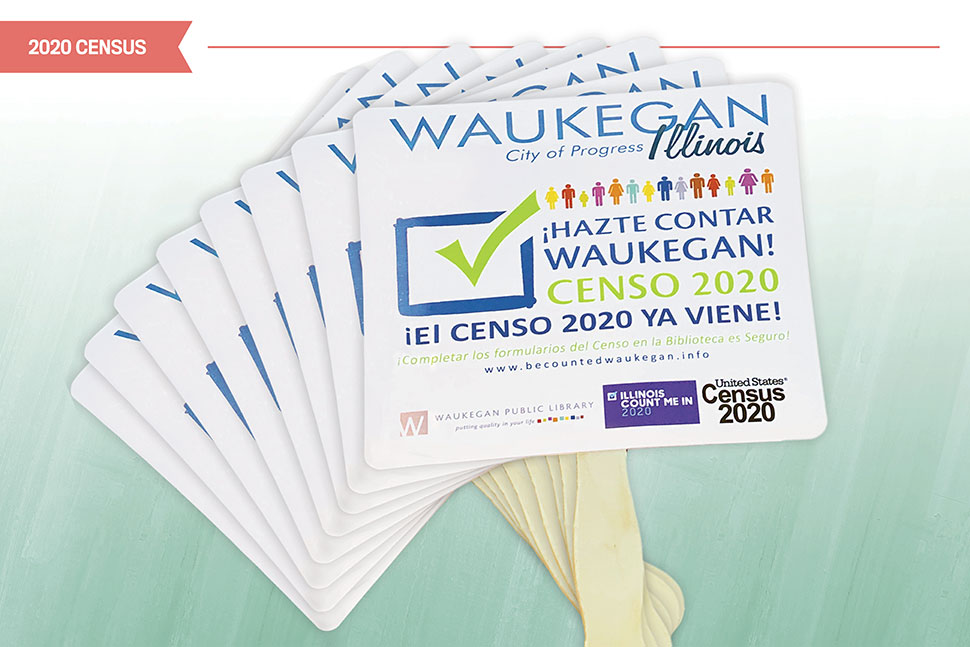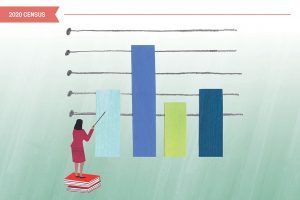
Toledo, Ohio—once a manufacturing hub, now losing population for lack of jobs—does not want to be undercounted in the 2020 Census and miss out on critical resources. So in May 2019, the mayor and Lucas County commissioners sent area businesses and organizations a letter asking them to join a Complete Count Committee (CCC).
“I was sent one of those letters,” says Rhonda Sewell, manager of external and governmental affairs for Toledo–Lucas County Public Library (TLCPL). “What’s at stake [in Ohio] is over $1,800 per person.”
Sewell and others who joined the CCC decided that, to not lose federal funds, Toledo and Lucas County needed to hire a census coordinator. Initially the CCC imagined the one-year, community stakeholder–funded position would be managed by United Way of Greater Toledo. “But there’s so much goodwill with the public library that the conversation sort of shifted,” she says. “We take stances on things, we believe in our mission … but we’re kind of nonpolitical.”
Not to mention, Sewell points out, the library had the workspace, technology, meeting rooms, and information resources for an outreach position to thrive. So TLCPL, through its foundation, made the hire.
TLCPL is one of a handful of libraries that have brought on contractors to help with census engagement. In New York City, where the 2010 Census self-response rate was below 62% (the national average is 76%), Brooklyn Public Library, New York Public Library (NYPL), and Queens Public Library are putting some of the city’s $1.4 million investment in library census efforts toward the Census Navigators program. At NYPL, this 20-week effort brings six part-time employees with customer service skills and fluency in a non-English language —the job ad specifically recruited Bengali, Chinese, French, and Spanish speakers—to neighborhoods most in need of census education.
“We have a wide reach,” says Jay Brandon, civic engagement and community partnerships manager at NYPL, who oversees the system’s Census Navigators. The library has 92 locations across the Bronx, Manhattan, and Staten Island, and “based on that footprint, it allows us to serve in a capacity that not only supports other community organizations but allows us to work in tandem with them to ensure that New York has a complete count.”
Building trust
These census specialists aren’t librarians—and that’s mostly by design. In a city where 55% of residents identify as Hispanic/Latinx—one of the hardest-to-count census demographics—it was vital for Waukegan (Ill.) Public Library (WPL) to hire a native Spanish speaker to handle outreach and build trust with target groups.
“I talked to a woman who was upset with the government, and she said she thought [the census] would be something to harm immigrants,” says Elizabeth Santana Andujar, census engagement specialist at WPL, whose one-year contract started in June 2019. “She was so upset, but I had the opportunity to explain what the benefits are to being counted. She changed her mind a little bit, and she said, ‘I’m going to talk with my husband and my family to explain how this is beneficial for us,’ so I see that my work works.”
Toledo–Lucas County 2020 Census Coordinator Deborah Barnett was hired in part for her community connections and customer service experience as a consultant and former bank vice president. “It’s about the messenger, and I must say, I’m a good messenger,” says Barnett. “I’ve been involved in this community for over 30 years.”
Though these roles require much allaying of misconceptions—for example, Barnett says she regularly needs to assure senior citizens and those lacking internet access that the census can be completed by mail or phone, not just online—much of it involves crafting a broader message and cultivating partnerships. Barnett meets with eight subcommittees to coordinate activities (such as creating branded fliers in four different languages or planning a census presence at Toledo’s MLK Unity Day celebration in January) as well as county leaders, faith-based communities, labor organizations, disability advocates, homeless shelters, and other partners that may have access to the 24% of the population in Lucas County deemed hard to count. “I have recruited six to eight churches that have committed to having Census Sundays” during which talking points will be read, she says, “and some of the churches … will have computers there for individuals to complete their census online.”
Andujar’s work at WPL has been similar: reaching out to religious groups, tabling and marketing at city events, taking her message to the radio and social media, planning a Census Kickoff Day, contacting potential collaborators, and creating a census toolkit in English and Spanish for other civic organizations to use.
To that end, she—as well as her counterparts at TLCPL and NYPL—expects that census specialists will have a hand in helping patrons who want to fill out census forms on library computers. WPL is designating classrooms for census response, and Selina Gomez-Beloz, WPL director and chair of Waukegan’s CCC, estimates that the library could end up hosting more than 5,000 people during the enumeration stage. NYPL anticipates its Census Navigators will shift from external outreach to more in-branch activities, such as answering questions and assisting with programming, once self-response kicks off in mid-March.
Why libraries?
The census coordinator position is one every library should consider, says Sewell. “It was essential for our system to take on this role and to house Deborah here and manage her contract. Because our community partners funded her role, [it’s] a model that can be duplicated,” she says.
WPL received grants from the government agency Reaching Across Illinois Library System and the nonprofit organization Forefront to aid its census awareness efforts, but Gomez-Beloz says those monies weren’t enough to fully fund Andujar’s position—so she made the decision to tap into operational funds. “I felt it was an important part of [the library’s] work,” she says. She is benchmarking the program’s success by “focusing on standard library metrics,” that is, the numbers of people the library talks to, events its hosts, and people it motivates to act.
At the end of Barnett’s tenure, she will create a report for Toledo–Lucas County’s CCC that details her outreach activities, best practices, and recommendations for the next count in 2030. “We’re looking at this being an ongoing thing,” says Sewell.
“If the library has the capacity for it, I think this is a great place for this kind of work to sit because we see so many different types of people every day,” says Gomez-Beloz. “I would say that libraries have the benefit of being planners and trusted persons within a community.”


